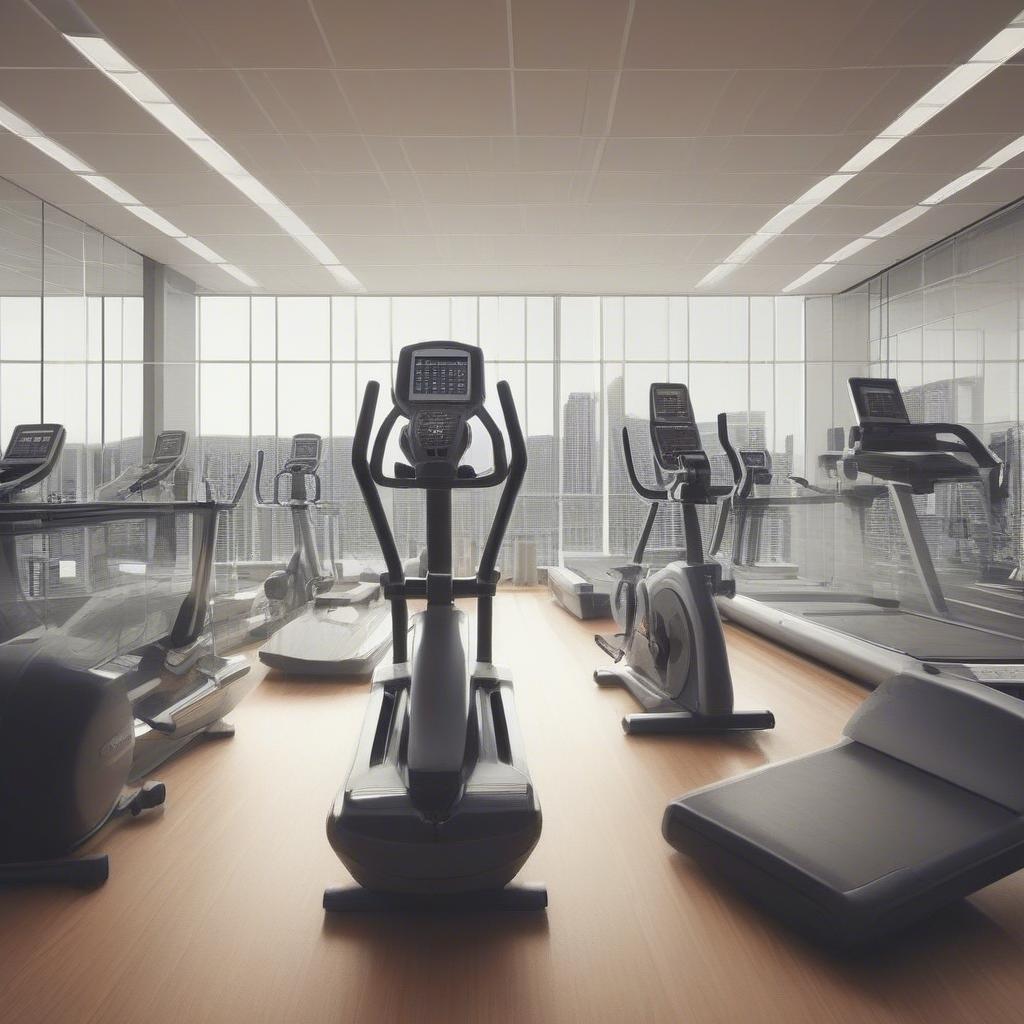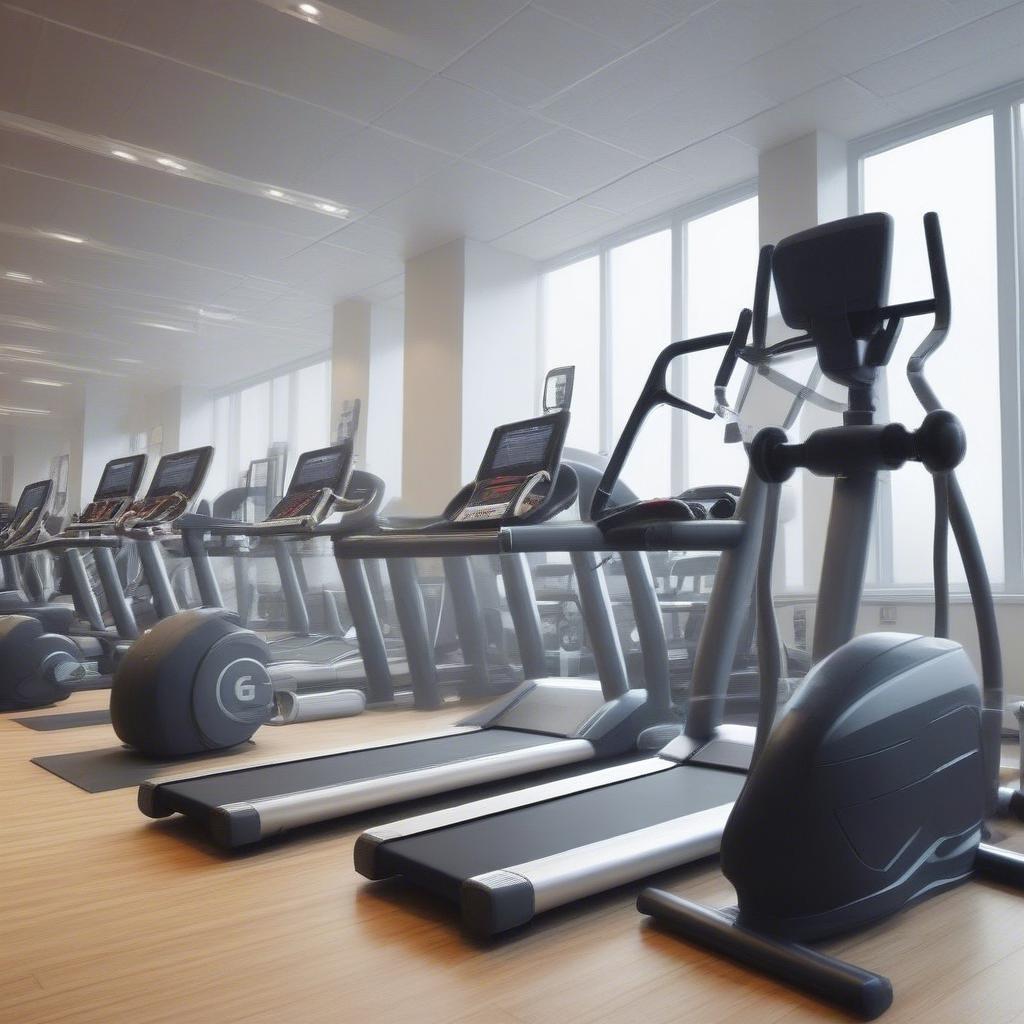
Running a gym is a demanding business, and while building a strong community and providing top-notch fitness experiences are priorities, managing operating costs is equally crucial. Among these costs, energy consumption often takes a significant bite out of your profits. This article delves into practical, actionable strategies to drastically reduce your gym’s energy costs, creating a more sustainable and profitable business. We’ll explore everything from simple adjustments to major upgrades, focusing on methods that bring noticeable gym energy efficiency and promote fitness sustainability while directly impacting your bottom line through cost savings.
Understanding Your Gym’s Energy Consumption
Before diving into solutions, it’s crucial to understand where your energy is actually going. This understanding forms the foundation for targeted and effective cost reduction strategies.
Pinpointing the Culprits: Where is the Energy Going?
- HVAC Systems: Heating, ventilation, and air conditioning are typically the biggest energy hogs in a gym. Maintaining comfortable temperatures for high-intensity workouts requires significant energy output, especially in larger spaces.
- Lighting: Both ambient lighting and task lighting for various areas, including studios, weight rooms, and locker rooms, contribute substantially to energy bills, especially if using older, less efficient bulbs.
- Equipment: Treadmills, ellipticals, weight machines, and other fitness equipment all draw power. Usage patterns and the efficiency of these machines play a role in overall consumption.
- Hot Water: Showers and other hot water usage contribute significantly to energy costs, particularly in gyms with high member traffic.
- Electronics: From computers and televisions to sound systems, all these devices draw power and contribute to energy bills.
- Open Doors and Windows: This often overlooked area can cause significant energy loss. Think about when a door is left open, and all the heated or cooled air escapes.
The Importance of an Energy Audit
An energy audit is a systematic evaluation of your gym’s energy usage. It’s like getting a check-up for your building’s energy health, helping to identify areas of inefficiency and potential savings.
- What it Entails: A professional energy auditor will assess your gym’s energy consumption patterns, examining lighting, HVAC, equipment, insulation, and other relevant areas.
- Benefits: This audit will provide you with a detailed report highlighting areas with high energy use, potential improvements, and estimated cost savings. It’s the best first step to achieve gym energy efficiency and cost savings.
- DIY Audits: While a professional audit provides comprehensive results, you can conduct a basic DIY audit by reviewing your energy bills, noting high consumption times, and observing areas that may be wasting energy.
Quick Wins: Simple Steps for Immediate Savings
Some of the most impactful changes are also the easiest to implement. These quick wins can start generating immediate cost savings and improvements in fitness sustainability at your gym.
Lighting Efficiency
- Switch to LEDs: Replacing incandescent or fluorescent lights with LED bulbs can significantly reduce your energy consumption. LEDs consume less energy, last longer, and produce less heat.
- Natural Light Maximization: Utilize natural light where possible by opening blinds and curtains. This reduces the need for artificial lighting, especially during daytime hours.
- Timers and Sensors: Install motion sensors or timers in areas like locker rooms or storage spaces to ensure that lights are only on when needed.
- Task Lighting: Use focused task lighting, like desk lamps, rather than relying solely on overhead lights.
Optimizing HVAC Usage
- Programmable Thermostats: Use programmable thermostats to adjust temperatures automatically, reducing unnecessary heating or cooling during off-peak hours or when the gym is closed.
- Regular Maintenance: Ensure HVAC systems are properly maintained with regular filter changes and tune-ups to improve efficiency. This also extends their life.
- Temperature Adjustments: A slight adjustment to the thermostat, a degree or two warmer in the summer and a degree or two cooler in the winter, can yield substantial cost savings without significantly impacting comfort.
- Zone Control: Implement zoning to control temperatures in different areas of the gym separately, based on their specific needs. This is especially useful for spaces that are rarely used, which can be kept cooler or warmer depending on the season.
- Seal Air Leaks: Check windows and doors for drafts and ensure that they are properly sealed to minimize heat loss or gain.
Smart Equipment Management
- Power Down: Encourage staff to power down equipment when it’s not in use, including televisions, sound systems, and computers.
- Energy-Efficient Settings: Utilize power-saving settings on fitness equipment and other electronic devices whenever possible.
- New vs Old: When it is time to purchase new equipment, look for energy-efficient models. The initial investment will pay off over time with decreased energy use.
Water Conservation
- Low-Flow Fixtures: Install low-flow showerheads, faucets, and toilets to reduce water consumption.
- Leak Detection: Check for leaks regularly and promptly repair them. Leaks can be a silent energy waster.
- Encourage Shorter Showers: Promote awareness among members to encourage them to take shorter showers to conserve both water and energy.
Staff and Member Engagement
- Education: Educate your staff and members about energy conservation practices.
- Visual Reminders: Post reminders about turning off lights, powering down equipment, and taking shorter showers.
- Incentives: Consider incentivizing energy-saving behavior, such as offering small rewards or recognition for contributing to fitness sustainability.
Strategic Upgrades: Medium-Term Investments for Long-Term Gains
While quick fixes are important, strategic upgrades provide a more profound and lasting impact on your gym’s energy efficiency and overall cost savings. These usually require a bit more investment but offer significant returns in the long run.
Advanced HVAC Solutions
- High-Efficiency HVAC Systems: Upgrading to more efficient HVAC units with high SEER (Seasonal Energy Efficiency Ratio) and HSPF (Heating Seasonal Performance Factor) ratings can significantly reduce energy consumption.
- Smart Thermostat Systems: Investing in smart thermostat systems that learn usage patterns and automatically optimize temperatures can further refine your energy usage.
- Heat Recovery Ventilation: Consider heat recovery ventilation (HRV) systems that capture and reuse heat, thus reducing energy needed for heating.
- Insulation Improvements: Adding insulation to walls, ceilings, and floors can reduce heat loss and gain, improving the efficiency of your HVAC system.
Renewable Energy Options
- Solar Panel Installation: Installing solar panels can generate electricity for your gym and significantly reduce reliance on traditional energy sources. While there is an upfront cost, there are usually financial incentives such as tax breaks, as well as long term savings.
- Solar Water Heaters: Solar water heating systems use the sun’s energy to heat water, reducing reliance on traditional water heating systems.
- Wind Power: In suitable locations, wind power can provide an alternative energy source. This requires an upfront investment, but can pay off over time.
Smart Building Management Systems
- Integration: Smart building management systems can integrate all energy systems, including lighting, HVAC, and equipment, allowing for centralized control and optimization.
- Real-Time Monitoring: These systems provide real-time data on energy usage, allowing you to identify inefficiencies and make immediate adjustments.
- Remote Control: Many smart building systems allow for remote control, meaning that staff can monitor and control settings even when not physically present at the gym.
Windows and Doors
- Energy-Efficient Windows: Replacing old windows with energy-efficient, double-paned, or low-E windows can reduce heat loss and gain, improving overall gym energy efficiency.
- Weather Stripping: Ensuring that all windows and doors are properly sealed with weather stripping can prevent air leaks.
- Automatic Doors: Consider automated doors to minimize the amount of time doors remain open, preventing loss of climate controlled air.
Fitness Equipment Upgrades
- Self-Powered Equipment: Invest in self-powered fitness equipment, such as treadmills and ellipticals that generate their own energy during use.
- Energy Efficient Models: When purchasing new equipment, choose models that have high energy efficiency ratings.
- Regular Maintenance: Regularly maintain equipment to ensure it runs efficiently, minimizing energy waste.
Long-Term Vision: Embedding Sustainability into Your Gym’s Culture
True fitness sustainability goes beyond just energy consumption. It’s about creating a holistic approach where environmental consciousness is integrated into your gym’s DNA. These long-term strategies will solidify your dedication to sustainability and build a more responsible and respected business.
Waste Reduction and Recycling
- Recycling Programs: Implement a comprehensive recycling program for paper, plastic, aluminum, and other recyclable materials.
- Composting: Consider composting organic waste, especially if your gym has a cafe or food preparation area.
- Reduce Single-Use Plastics: Encourage members to bring their own water bottles and consider switching to refillable soap and shampoo dispensers.
Green Procurement
- Eco-Friendly Products: Prioritize purchasing eco-friendly cleaning products, paper goods, and other supplies.
- Sustainable Equipment: When buying new equipment, choose products that are made from recycled or sustainable materials.
- Local Sourcing: Support local businesses by sourcing products from local vendors. This reduces transportation costs and environmental impact.
Community Engagement
- Sustainability Events: Host events that promote awareness of sustainability practices.
- Partnerships: Collaborate with local environmental organizations to promote sustainability in your community.
- Member Challenges: Host sustainability challenges that encourage members to adopt eco-friendly habits in their own lives.
Tracking and Monitoring
- Energy Usage Data: Track your energy usage data over time to monitor the effectiveness of your sustainability initiatives.
- Progress Measurement: Set goals for reducing your energy consumption and track your progress regularly.
- Continuous Improvement: Regularly evaluate your sustainability efforts and make adjustments as needed to ensure ongoing improvement.
Learn Business: Your Partner in Sustainability and Success
Running a gym requires juggling many priorities. You need a reliable partner that can provide the guidance and resources needed to navigate the complexities of business ownership, and that’s where Learn Business comes in. Learn Business specializes in supporting businesses by offering guidance, resources, and templates tailored to their specific needs, including gym energy efficiency and cost savings.
How Learn Business Supports Gym Owners
- Business Planning: Learn Business offers resources to help you develop comprehensive business plans with a focus on sustainability and financial efficiency. These plans help you identify areas for improvement and track your progress over time.
- Financial Management: Access tools and templates for budgeting, forecasting, and financial analysis that can help you effectively manage your costs and track your cost savings from implementing energy-efficient practices.
- Sustainability Plans: Get guidance on developing and implementing effective sustainability plans specific to your gym, helping you establish a long-term vision that aligns with your business goals and environmental responsibility.
- Marketing and Branding: Learn how to effectively communicate your commitment to sustainability to attract environmentally conscious members and build a brand that resonates with your values.
- Operational Efficiency: Learn Business provides resources that can help you streamline your operations, reduce waste, and improve the overall efficiency of your gym. This can lead to further cost savings and ensure your processes align with your sustainability goals.
- Templates and Checklists: Take advantage of templates and checklists for conducting energy audits, developing sustainability plans, and tracking your progress.
- Expert Support: Access expert guidance and resources to help you implement best practices and overcome common challenges in your journey to sustainability.
- Community: Connect with a community of other gym owners to learn from their experiences and gain valuable insights.
Benefits of Partnering with Learn Business
- Streamlined Processes: Gain access to proven templates and processes that simplify complex tasks, allowing you to focus on running your business.
- Increased Profitability: By implementing energy-saving strategies and streamlining operations with the support of Learn Business, you’ll achieve substantial cost savings and boost your bottom line.
- Improved Sustainability: Develop and implement effective sustainability plans to reduce your environmental footprint and attract environmentally conscious members.
- Enhanced Brand Reputation: A strong commitment to sustainability will enhance your brand reputation and set you apart from competitors.
- Ongoing Support: Receive ongoing support and guidance from Learn Business to ensure your business continues to thrive in the long term.
Conclusion: A Sustainable Future for Your Gym
Reducing energy costs in your gym isn’t just about saving money; it’s about embracing a more sustainable future for your business and the planet. By implementing the strategies outlined in this guide, from quick wins to strategic upgrades, and building a culture of sustainability with the support of resources like Learn Business, you can create a healthier, more profitable, and more responsible gym. Embrace gym energy efficiency, promote fitness sustainability, and achieve significant cost savings by taking action today. Your community and your bottom line will thank you.



Leave a Reply